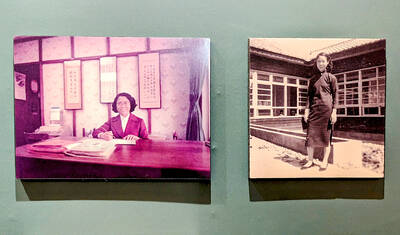Mark Scott was walking home from a Celtic soccer match when a Rangers fan attacked him in a Glasgow street and killed him by slitting his throat.
Two years later, in 1997, two fans were stabbed to death in a brawl involving at least 10 people after a match between the two Glasgow sides.
Mindless football thuggery? It looks that way, but here -- like nowhere else in mainland Britain -- attacks on soccer fans are as much about the sectarian divide between Catholics and Protestants as about football rivalry.
Sectarianism blights football in Glasgow and, according to campaigners, is not confined to the city's stadiums. They say it is ingrained in wider Scottish society and proving difficult to stamp out.
"There is often a poisonous atmosphere in the stadiums," said a spokesman for Nil By Mouth, a pressure group set up by a friend of Scott's in the wake of his murder.
"People then carry that poisonous atmosphere out onto the streets, quite often fuelled by alcohol, and they scar people for life," said the spokesman, who declined to be named.
"In the worst cases, they take lives."
While only 13 percent of Scots say they have suffered sectarian abuse, the figure is much higher in Glasgow, Scotland's biggest city.
Asked in a survey for the city council if they agreed with the statement that "sectarianism is becoming a thing of the past", two thirds of Glaswegians said no.
The problem is, to a large degree, a spill-over from the conflict across the sea in Northern Ireland.
Thousands of Irish emigrated to Scotland to escape the famines of the 19th century, bringing their religious beliefs with them. Those beliefs found expression in football.
Even now, 74 percent of Celtic fans describe themselves as Catholic and only 4 percent are Protestant. Some 65 percent of Rangers fans are Protestant and 5 percent Catholic.
It took until 1989 for Rangers to break the habit of a lifetime and sign a Catholic player -- former Celtic striker Maurice Johnston.
Celtic fans branded him a traitor while some hard-line Rangers fans returned their season tickets in protest and set fire to their scarves in front of the club's Ibrox stadium in disgust.
Since then, both clubs have taken steps to stamp out sectarianism but the regular "Old Firm" clashes between the two sides still generate even today horrific violence.
In May 1999, a Rangers fan died when he was beaten up after a match with Celtic and a 20-year-old Celtic fan was injured after being hit by a bolt fired from a crossbow.
In August the following year, a 23-year-old Celtic fan was stabbed to death by a Rangers fan near Ibrox.
His family built a shrine to him and covered it in Celtic and Rangers scarves. Someone in a less conciliatory frame of mind set fire to the shrine.
Scott, a 16-year-old schoolboy, was murdered by a member of a well-known Protestant family who was defended in court by a renowned Protestant lawyer.
The lawyer later caused outrage when he was caught on film singing inflammatory anti-Catholic songs during celebrations of a Rangers victory.
Now, it seems, the authorities in Scotland have decided enough is enough.
Scotland's first minister Jack McConnell, the country's most powerful politician, took the unusual step in a speech late last year of acknowledging the country's "secret shame" and vowing to tackle it head on.
He spoke to officials from Celtic and Rangers and set up a working group on the issue which is due to report soon.
In June this year, Scotland changed its law to make religious hatred an aggravated offence. That means judges can impose tougher sentences than usual if they believe a crime was religiously motivated.
"That was a very big step in legislating specifically against religious bigotry," said the Nil By Mouth spokesman.
"We're absolutely delighted that Jack McConnell has got behind this personally and we await the recommendations of the working group with interest."
Elinor Kelly, a researcher in race and ethnic issues at Glasgow University, also acknowledges "a growing sense of assurance" in the way Scotland is handling the issue.
"But people are still incredibly tentative when in comes to talking about sectarianism up here," she added.
"Generally, people don't want to stick their heads above the parapet."

Following the shock complete failure of all the recall votes against Chinese Nationalist Party (KMT) lawmakers on July 26, pan-blue supporters and the Chinese Communist Party (CCP) were giddy with victory. A notable exception was KMT Chairman Eric Chu (朱立倫), who knew better. At a press conference on July 29, he bowed deeply in gratitude to the voters and said the recalls were “not about which party won or lost, but were a great victory for the Taiwanese voters.” The entire recall process was a disaster for both the KMT and the Democratic Progressive Party (DPP). The only bright spot for

Water management is one of the most powerful forces shaping modern Taiwan’s landscapes and politics. Many of Taiwan’s township and county boundaries are defined by watersheds. The current course of the mighty Jhuoshuei River (濁水溪) was largely established by Japanese embankment building during the 1918-1923 period. Taoyuan is dotted with ponds constructed by settlers from China during the Qing period. Countless local civic actions have been driven by opposition to water projects. Last week something like 2,600mm of rain fell on southern Taiwan in seven days, peaking at over 2,800mm in Duona (多納) in Kaohsiung’s Maolin District (茂林), according to

Aug. 11 to Aug. 17 Those who never heard of architect Hsiu Tse-lan (修澤蘭) must have seen her work — on the reverse of the NT$100 bill is the Yangmingshan Zhongshan Hall (陽明山中山樓). Then-president Chiang Kai-shek (蔣介石) reportedly hand-picked her for the job and gave her just 13 months to complete it in time for the centennial of Republic of China founder Sun Yat-sen’s birth on Nov. 12, 1966. Another landmark project is Garden City (花園新城) in New Taipei City’s Sindian District (新店) — Taiwan’s first mountainside planned community, which Hsiu initiated in 1968. She was involved in every stage, from selecting

As last month dawned, the Democratic Progressive Party (DPP) was in a good position. The recall campaigns had strong momentum, polling showed many Chinese Nationalist Party (KMT) lawmakers at risk of recall and even the KMT was bracing for losing seats while facing a tsunami of voter fraud investigations. Polling pointed to some of the recalls being a lock for victory. Though in most districts the majority was against recalling their lawmaker, among voters “definitely” planning to vote, there were double-digit margins in favor of recall in at least five districts, with three districts near or above 20 percent in